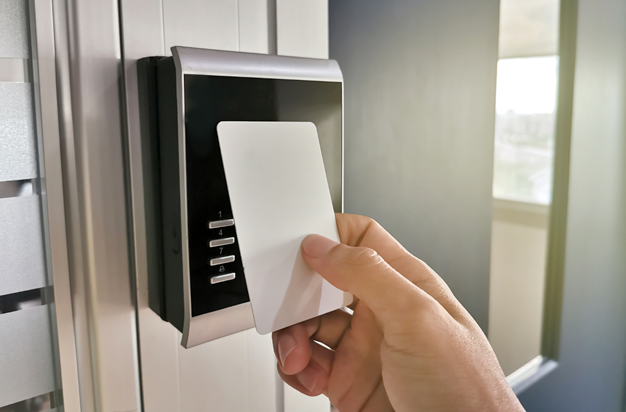What You Should Know About Badge Access Control for Business Security
One of the more popular security systems for offices and commercial workplaces is through badge access control. These badge systems allow greater control over who can and cannot access the workspace because they reduce the risks that traditional key systems have and are easier to monitor. However, several things must be considered before installing a badge access system in your workplace.
Basics of Badge Access Systems
As the name suggests, a badge access system uses ID badges or cards to monitor and regulate who has access to office areas. This may be implemented on the points of entry to the building or specific areas within the building, depending on the permissions given to a particular employee through their card or badge.
One of the biggest stressors for business owners is that their security system may become compromised if an employee loses their key. However, badges and cards can be easily deactivated through the control database. Similarly, an authorized manager can use the control panel to increase or decrease an employee’s access permissions as they move up or down the employment hierarchy. Because badge access control systems tend to be extremely reliable, they are used in many industries, including hospitals, government facilities, and commercial settings like office buildings.
To operate properly and maintain business security, a badge access control system requires several key components.
ID Badges and Cards
Each badge or card is assigned a unique code. This can be done through a magnetic stripe on the back, barcode, QR code, or RFID (Radio-Frequency Identification). However, some cards and badges may store this code in a computer chip inside the card or badge, usually protected by hard plastic. Regardless of the method, these chips or codes allow the badge to interact with the security system.
Badge Scanners and Readers
Badge scanners read the code assigned to the card or badge and check it against the information and access permissions in the control center, which contains the access database. If the badge code is the access permission for the protected area, the control center sends a signal to unlock the door.
Magnetic or Electronic Door Locks
Entry doors secured with magnetic or electronic locks protect work areas from being accessed by unauthorized personnel. These locks deactivate or activate based on the signals they receive from the control panel.
Should You Install a Badge Access Control System?
Business owners thinking of installing a badge access system in their workplace should ask themselves and their team the following:
Business Growth Scalability
Does the current growth of the business justify the cost of implementing and maintaining a badge security system?
Integration with Current Security Infrastructure
Would upgrading to a badge access control system improve the security of the business? Or is the current system sufficient for its security needs?
Interface Usability and Management
Is the badge security system user-friendly? Will it require additional training for employees to use it effectively?
Redundancy Plans for Continuous Operation
In case of a power outage or system failure, is there at least one entry that can be accessed manually? If using a traditional key, who will have access to it?
Industry Regulations and Standards Compliance
What are the regulations and standards for work security in your industry? Does the badge access system meet these requirements?
Conclusion
Badge access control systems are a popular choice for securing offices and commercial workplaces, as well as sensitive areas in hospitals and government buildings. Once a business owner or building manager understands the function and key considerations of badge security systems, they can better determine which system to implement in their workplace.

